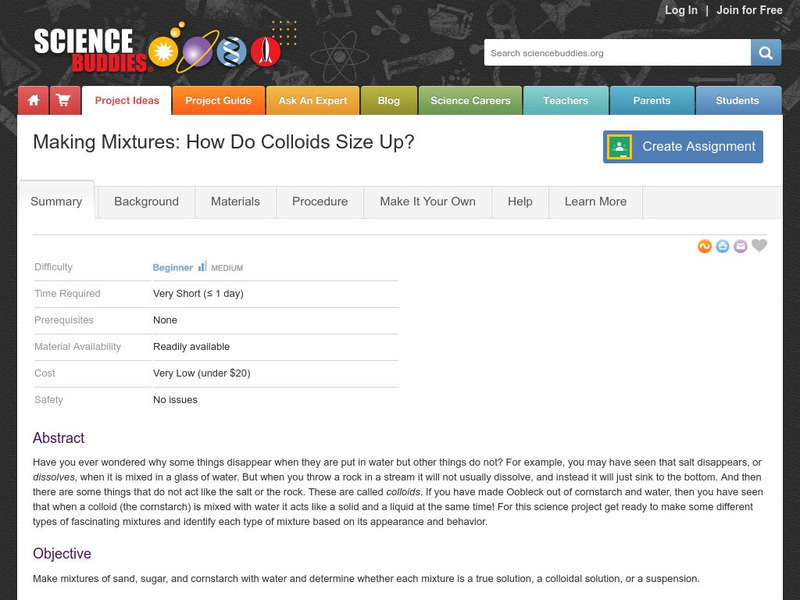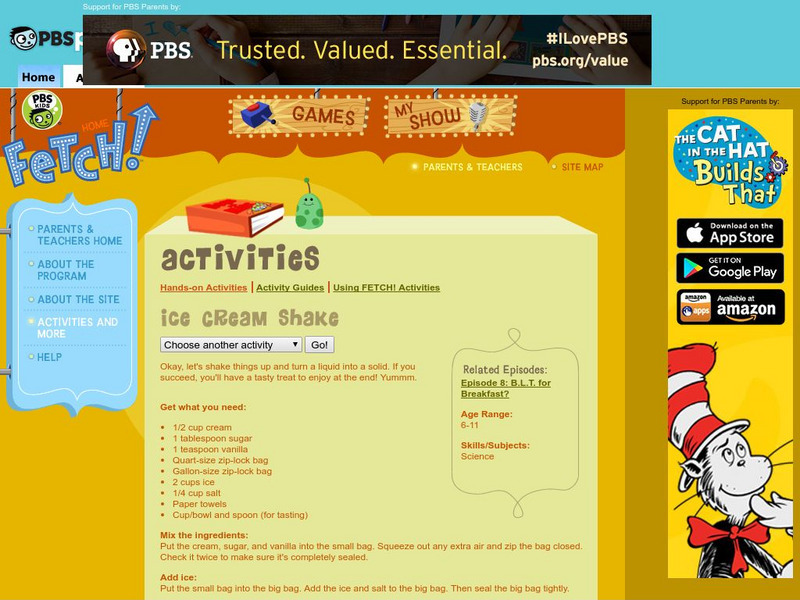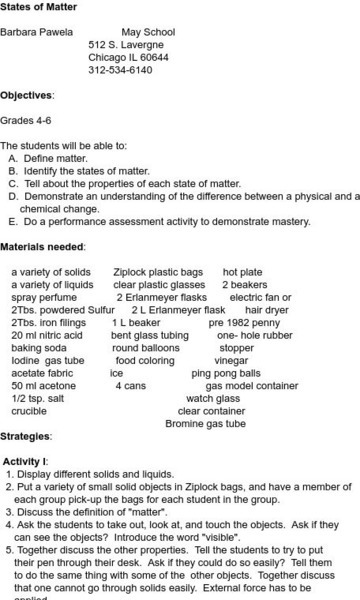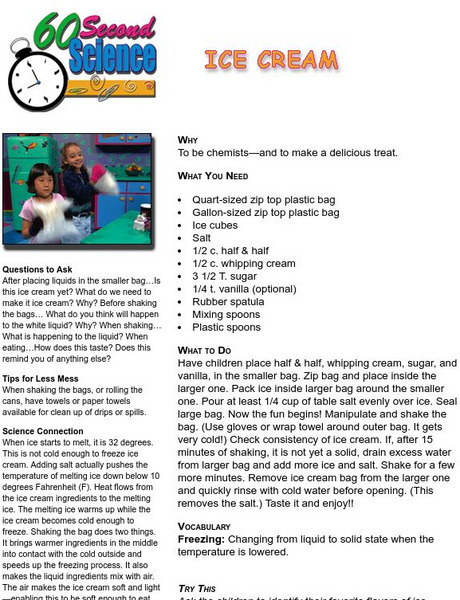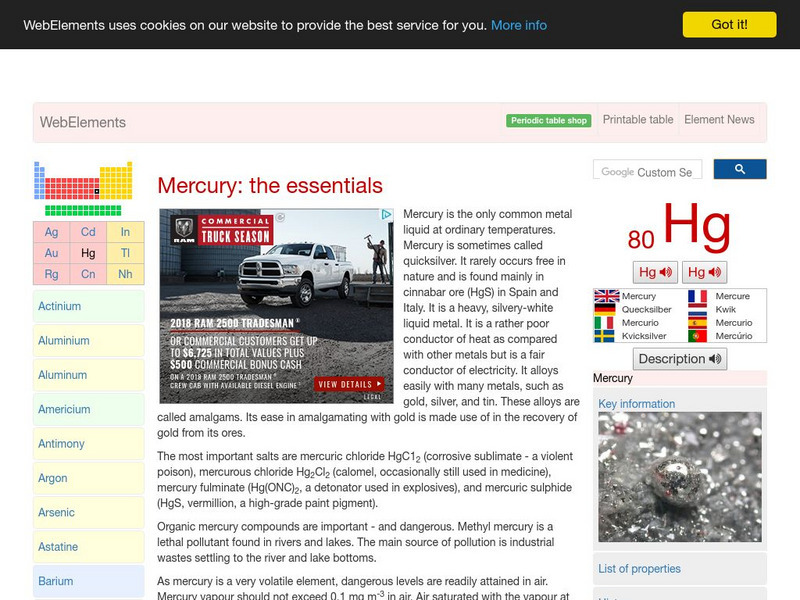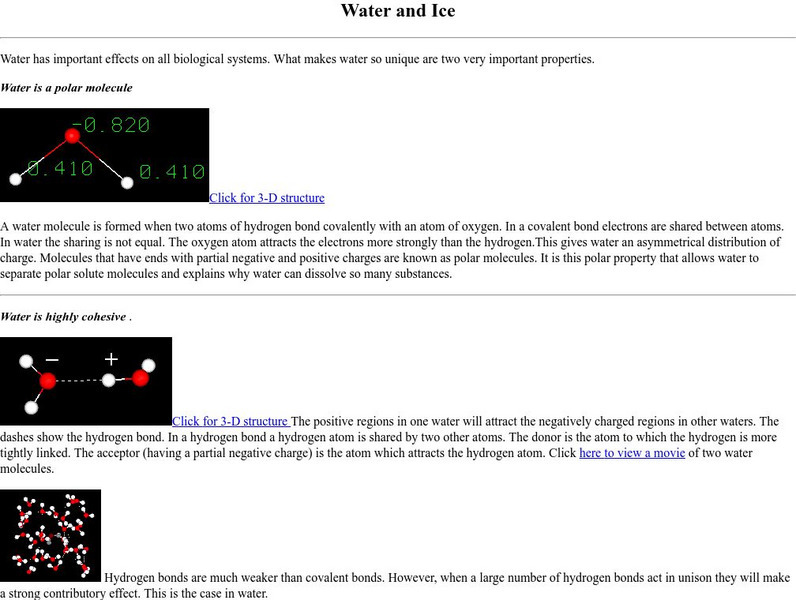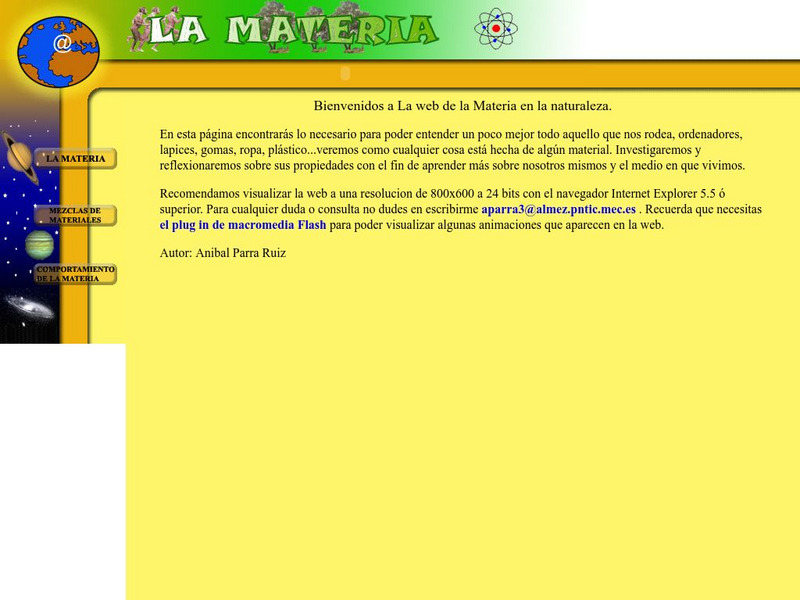TeachEngineering
Teach Engineering: Viscous Fluids
Students are introduced to the similarities and differences in the behaviors of elastic solids and viscous fluids. Several types of fluid behaviors are described--Bingham plastic, Newtonian, shear thinning and shear thickening--along...
Science Buddies
Science Buddies: Can Water Float on Water?
Of course it can, you say: ice is water and ice floats. And you're right. But we're talking about water in the liquid phase Can liquid water float on water? The goal of this project is to investigate what happens to layers of water with...
NBC
Nbc Learn: Chemistry of Water
This video/lesson series explains how the structure and behavior of H2O in liquid form gives water its properties, and make it a chemical essential for life. Also in this collection: a Victorian-era depiction of the water molecule; news...
Science Buddies
Science Buddies: Getting Critical Over Colloids
What is a colloid? If you have made Oobleck out of corn starch and water, then you know that a colloid is a mixture that acts like a solid and a liquid at the same time. This activity helps you determine the critical factors that...
BioEd Online
Bio Ed Online: How Can We Find Out What Is in Water?
In this lesson students use simple paper chromatography to investigate a mystery liquid. Student sheets are provided in English and in Spanish.
New York University
New York University: States of Water
Use this resource to learn about the three different phases of water; solid, liquid, and gas. What happens to water as it changes into a solid or gas? Includes short and easy to do activity.
PBS
Pbs Teachers: Ice Cream Shake
Investigate states of matter while making ice cream. Explore how to turn a liquid into a solid by removing heat energy.
Science and Mathematics Initiative for Learning Enhancement (SMILE)
Smile: States of Matter
A comprehensive lesson plan site that contains a number of activities to aid in teaching about the states and properties of matter and the difference between a physical and chemical change.
PBS
Pbs Teachers: Water Density
Demonstrate the effect that dissolving different amounts of salt in water has on the density of the liquid.
Other
60 Second Science: Making Ice Cream
Discover how liquids can change to solids while making ice cream.
PBS
Pbs Teachers: Make Some Zlime
Explore properties of matter by making a slimy substance out of cornstarch and water then noticing how it reacts to pressure.
Other
Nautilus: Neon Properties
A series of slides from Nautilus with good, well organized information on the properties of neon.
BioEd Online
Bio Ed Online: What Is the Water Cycle?
In this lesson students will create and investigate a simple model of the water cycle. Student sheets are provided in English and in Spanish.
Chem Tutor
Chem Tutor: Chemistry: States of Matter
This lesson focuses on the states of matter: solids, liquids, and gases. It also discusses the Kinetic Theory of Matter, Thermodynamics, Triple point, Phase Change Graphs and the Heating Curve of Water. It provideds adrawing of a heating...
Florida-Spectrum Environmental Services
Florida Spectrum: Chemical Fact Sheet: Neon
Detailed information on neon, its properties, history and uses. A good resource for this element.
Other
Science4us: States of Matter
In the States of Matter module, students further explore the concept that anything on earth that has mass and takes up space is matter. This exercise introduces students to solids, liquids and gases, the three most common states of...
Web Elements
Web Elements Periodic Table: Mercury
An excellent summary of basic information on mercury, including chemical and physical properties and uses.
Chemicool
Chemicool: Neon
This site, which is provided for by Chemicool, gives a summary set of data tables on the physical and chemical properties of neon.
Energy4Me
Energy4me: Fracturing With Gelatin
This activity aims to demonstrate how fracturing fluid, under pressure, is able to create a fissure in the rock layer. Students will be able to see the syrup come out at a high velocity to crack the gelatin. The gelatin, however, will...
ABCya
Ab Cya: States of Matter
States of Matter is an educational activity for kids to learn about the different properties of matter. The lesson will introduce solids, liquids, and gases. Students will then be assessed through a sorting activity where they will...
Science Struck
Science Struck: An in Depth Comparison of Cohesion vs. Adhesion
Explains what cohesion and adhesion are; what their effects are in a liquid; what surface tension, a meniscus, and capillary action are; and gives examples of where one can observe cohesion and adhesion.
New York University
New York University: About Water and Ice
Page uses movies and 3D images to explain how properties of water relate to polarity and hydrogen bonding.
Ministerio de Educación (Spain)
Ministerio De Educacion: La Materia
In this site you can learn and experiment with matter properties and change in behavior. Every theoretical explanation is accompanied by an animation. You will be able to aply the theory to real experiments.






